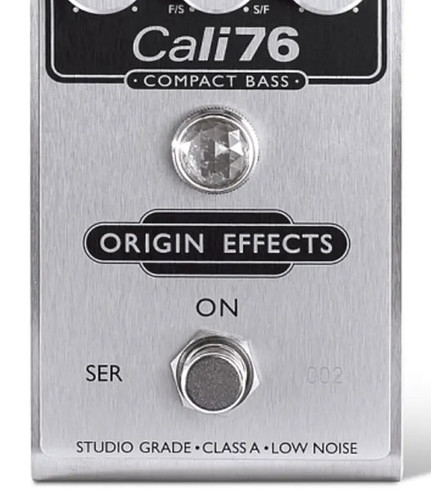I keep seeing things like “Class A Pedal” and “Class D Amp”. Can someone please enlighten me as to what these things mean?
I’m too drunk to answer now but that’s interesting … and obviously you will have your answer 
Thanks, that’s useful. I could do with the dummies version though. 
It’s hard for me to work out which is better for me. And if pedals are different than amps in this regard.
about pedals , that’s not important at all.
about amps …
- class A sounds the more “pure” but with a very low efficiency ; not suitable at all for a bass amp
- class AB sounds relatively “pure” yet efficient, and with very fast transcient, that’s the classic bass amp
- class D brings extremely high power with very low heat. transcient are not as fast, it brings some kind of “natural compression”, you can like it or not
that’s a very brief sum up but you got the idea
Shortest answer: Class A/B are your classic heavy tube amps. Class D are your modern lightweight Solid State amps.
Long Answer: What are the Different Types of Audio Amplifier Classes? | Audioholics
![]()
![]()
![]()
Maybe you meant your description of Class A/B to be for Class A? The article linked by Barney gave descriptions, and for Class A it said:
To many players, this inefficiency is worth it; the main reason for a Class A’s linear signal function is the use of tubes.
For example, I believe Fender Rumble amps, at least the 15, 25, and 40, are all Class A/B, but they are not “heavy tube amps.” They are solid state, and supposed to be light (the Rumble 40 weighs 18 pounds).
I was just using a generalization based on what I’ve seen, but not versed enough on the subject to break it down. Didn’t know that about the Entry level Rumbles.
Maybe the low wattage helps keep it an A/B circuit? Might also explain how Pedals such as the one posted can still be Class A… 
I’ve tried reading up on it, but lose grasp quick 
The simple answer is A is for analogue D is for digital.
Not literally, but that’s the point that matters to people if they like one or the other.
Class D is irrelevant in a pedal because it’s a power amp only circuit.
They are trying to say it’s an analogue pedal rather than a digital signal processor.
Same here about losing grasp quickly - I get what I can out of articles, but it never seems to stick permanently.  I had just read the article, and seemed to recall about the Class A stuff. Ask me tomorrow, and it’ll be gone, I’m sure!
I had just read the article, and seemed to recall about the Class A stuff. Ask me tomorrow, and it’ll be gone, I’m sure!
The circuit topology of A AB or C doesn’t depend on the components. Tubes and transistors perform the same function in power circuit design. They distort differently when pushed hard. For the lower power levels you can buy an entire analogue amplifier on an integrated circuit chip that sits on your pinky.
Class D is never made with tubes. It’s switches and capacitors.
Funny, so it’s somewhat similar with hifi amplifiers.
Well, technically the same right? The Audioholics site I linked focuses more on Home Theatre.
Yeah, I just thought tubes are a bit more common for guitar amps.
That sounds like an answer I would give ![]()
![]()
Even broader than that, to an engineer “audio amplifiers” belong to “power supply design” and loudspeakers belong to “linear motor design”. The same techniques are used for them all.
Crown audio amps started as a division of Techron, a maker of power supplies for medical imaging equipment.
. . . aaaaaandddd, you’ve officially gone over my head! My engineer husband would understand, but not moi (well, I think I get the gist, a bit). But thanks for the info, I do try to pick up what I can from discussions in the BassBuzz forums.

